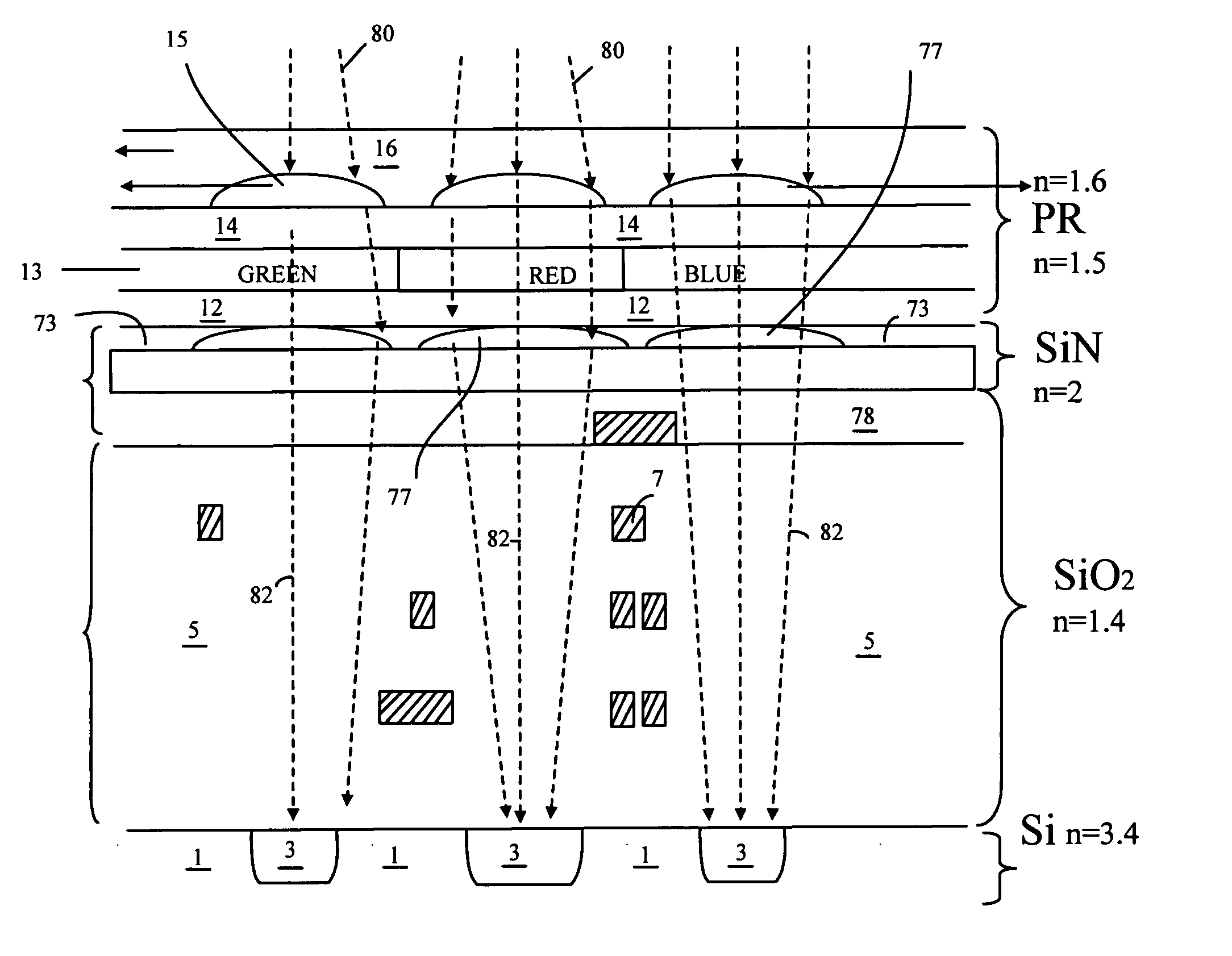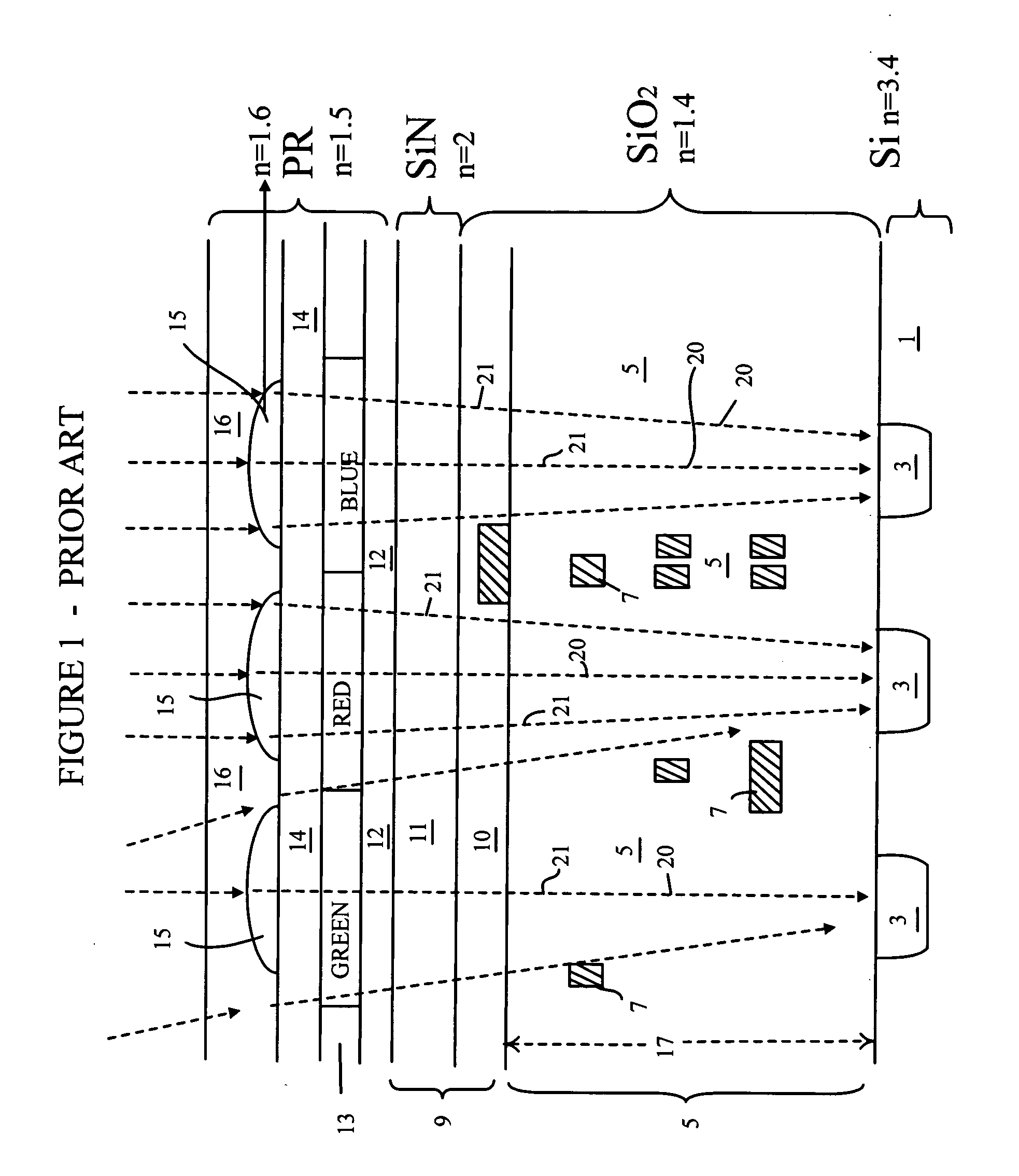Lens structures suitable for use in image sensors and method for making the same
a technology of image sensor and lens structure, which is applied in the direction of semiconductor devices, radio frequency controlled devices, electrical devices, etc., can solve the problems of reducing the optical signal and therefore the sensitivity of the photosensor, and the difficulty of aligning the lens and the photosensor
- Summary
- Abstract
- Description
- Claims
- Application Information
AI Technical Summary
Problems solved by technology
Method used
Image
Examples
Embodiment Construction
[0021]FIG. 1 shows an exemplary solid state imaging device and includes sensors 3 formed in substrate 1 according to the PRIOR ART. Sensors 3 are photosensitive devices and may be photodiodes or other photosensors. The imaging device also includes inter-metal dielectric, IMD 5 that may include several levels of metal interconnect leads 7 which are desirably disposed between the sensors 3 so as not to deflect or impede light rays 21 from reaching sensors 3. Passivation level 9 may include a silicon nitride film 11 and further dielectric layer 10 which may be formed by the chemical vapor deposition of a high density plasma. The image sensor also includes plain layer 12, color filter 13, microspacer 14 and microlenses 15 aligned over sensors 3. Overcoat 16 covers microlenses 15 and may be formed of suitable materials such as acrylate, methacrylate, epoxy-acrylate, or polyimide and include a thickness of 0.3-3.0 μm. Plain layer 12 may have a refractive index of 1.4-1.7, may be composed ...
PUM
 Login to View More
Login to View More Abstract
Description
Claims
Application Information
 Login to View More
Login to View More - R&D
- Intellectual Property
- Life Sciences
- Materials
- Tech Scout
- Unparalleled Data Quality
- Higher Quality Content
- 60% Fewer Hallucinations
Browse by: Latest US Patents, China's latest patents, Technical Efficacy Thesaurus, Application Domain, Technology Topic, Popular Technical Reports.
© 2025 PatSnap. All rights reserved.Legal|Privacy policy|Modern Slavery Act Transparency Statement|Sitemap|About US| Contact US: help@patsnap.com



